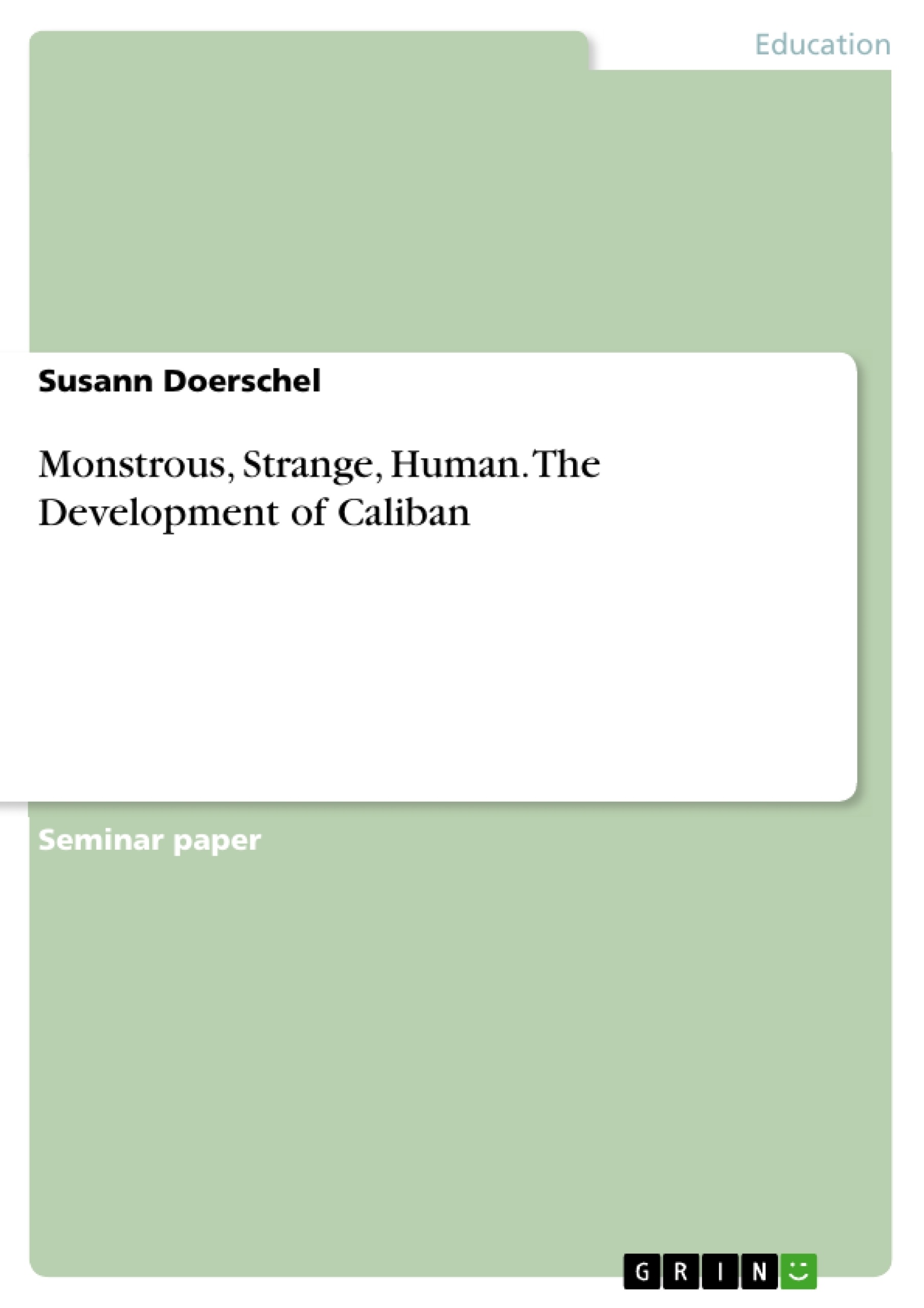The interpretation of the character of Caliban, as it was in the 17th century, differs a lot from today's reception. The change of this ambiguous character during the past 400 years is the product of different historical, political and socio-cultural contexts. This work will give a comparison of the Caliban from the 17th century and his presentation during 400 years until forms of interpretation in the 21st century and show where differences and similarities lay.
Inhaltsverzeichnis (Table of Contents)
- Monster, Stranger, Human?
- Shakespeare's Sources: Where did the inspiration come from?
- 18th century - The Monster
- 19th century - The Stranger
- 20th century - The Human Being
- 21st century What's up for Caliban?
Zielsetzung und Themenschwerpunkte (Objectives and Key Themes)
This work aims to explore the development of the character of Caliban from Shakespeare's play The Tempest, examining how interpretations of his monstrous, strange, and human qualities have evolved over the past 400 years. The focus is on understanding the influences of different historical, political, and socio-cultural contexts on the reception of this ambiguous character.
- The evolution of Caliban's representation across centuries
- The influence of historical and cultural contexts on character interpretation
- The interplay of monstrosity, strangeness, and humanity in Caliban's portrayal
- The exploration of Caliban's ambiguous ontological background
- The impact of Shakespeare's sources on the creation of Caliban
Zusammenfassung der Kapitel (Chapter Summaries)
The first chapter examines the character of Caliban in the context of his creation in Shakespeare's The Tempest. It explores the sources that likely inspired Shakespeare, including accounts of the New World, descriptions of native peoples, and literary works like Montaigne's essay on cannibals.
The second chapter focuses on the portrayal of Caliban in the 18th century, drawing on contemporary accounts and visual representations. It discusses the limited evidence available due to the lack of recorded performances and explores the potential for speculation based on the available information.
Schlüsselwörter (Keywords)
Caliban, The Tempest, Shakespeare, monster, stranger, human, colonialism, post-colonialism, cultural icon, representation, interpretation, historical context, socio-cultural context, sources, 18th century, 19th century, 20th century, 21st century, visual arts, literature, performance, adaptation.
- Citation du texte
- Susann Doerschel (Auteur), 2017, Monstrous, Strange, Human. The Development of Caliban, Munich, GRIN Verlag, https://www.grin.com/document/372968



